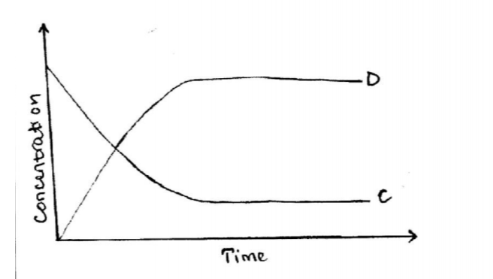
2017 Biology Paper 1
Answer all the questions in the spaces provided.
1. Below is an illustration of a piece of apparatus strategically positioned to trap some organisms.

(b) State the function of the part labelled E. (1 mark)
2. Below are diagrams of a cell organelle obtained from different organs of an animal.

(a) (i) For each organelle state an organ in the urinary system where it is likely to be found. (2 marks)
F
G
(ii) Give a reason for your answers in (a) (i) above (2 marks)
(b) Name the part of the chloroplast where the following reactions occur:
(i) Carbon(IV) oxide fixation (1 mark)
(ii) Photolysis (1 mark)
3. During a practical investigation on food tests, students were provided with the following reagents.
Benedict’s solution
Sodium hydrogen carbonate
”’ Dilute hydrochloric acid.
(a) Identify the food substance the students were to test. (1 mark)
(b) State the role of dilute hydrochloric acid and sodium hydrogen carbonate during the experiment.
Dilute hydrochloric acid (1 mark)
(ii) Sodium hydrogen carbonate (1 mark)
4. In an experiment on respiration, a mouse was observed to have inhaled 200 cm3 of oxygen and exhaled 199.75 cm3 of carbon(IV) oxide in ten minutes.
(a) Calculate the respiratory quotient for the activity in the experiment. (2 marks)
(b) Identify the possible food substance consumed by the mouse. (1 mark)
(c) State the fate of the excess food named in (b) above in the human body. (2 marks)
5. The photograph illustrates a housefly at various stages of its development.

(a) (i) On the photograph, name the stages of the life cycle. (1 mark)
(ii) Using arrows, link the stages of the life cycle in the correct order. (1 mark)
(b) (i) State two differences between the life cycles of a housefly and that of a cockroach. (2 marks)
(ii) State one advantage of the life cycle of a cockroach to itself. (1 mark)
6. Name two enzymes in the human digestive system which are secreted in an inactive form. (2 marks)
7. The diagram below represents a stage in the division of a cell.

With a reason, identify the organism from which the cell was obtained. (2 marks)
8. Explain why short distance runners breathe quickly and deeply at the end of a race. (2 marks)
9. (a) State the function of a mirror in a light microscope. (1 mark)
(b) Give one reason why the coarse adjustment knob should not be used to lower the high power objective. (1 mark)
10. (a) State the effect of movement of the diaphragm muscles during inhalation in mammals. (3 marks)
(b) State two structural adaptations of leaves that maximise efficiency in gaseous exchange. (2 marks)
11. The set up below illustrates a certain physiological process.
molecules of dy membrane (cross section) equilibrium

(a) (i) Name the physiological process. (1 mark)
(ii) Give two examples of the process named in (a) (i) above in plants. (2 marks)
(b) State two ways by which the movement of dye molecules in the set up would be slowed down. (2 marks)
12. Explain the survival values of the following tropic responses to plants.
(a) Geotropism (2 marks)
(b) Phototropism. (1 mark)
13. Name the causative agent for Tuberculosis. (1 mark)
14. The photograph below illustrates a germinating seedling.

(a) Name the type of germination illustrated in the photograph. (1 mark)
(b) Explain the function of each of the parts labelled G and H.
G (1 mark)
H (1 mark)
15. Explain the physiological process responsible for keeping young seedlings upright. (3 marks)
16. The following are text messages on a cellphone that represent gene mutation.

(a) Identify the type of gene mutation represented in each case
I (1 mark)
II (1 mark)
(b) State Mendel’s First Law. (1 mark;
(c) State two disadvantages of genetically modified plant products. (2 marks:
17. How is the surface area increased in the mammalian small intestines? (2 marks)
18. Below are diagrams representing developmental stages of three different vertebrates.

(a) State the evidence of evolution illustrated by the vertebrates in the diagram. (1 mark)
(b) Suggest why the structure labelled J has been retained throughout the evolution of fish.(2 marks)
(c) State two major advantages evolution has given humans over most of the other animals. (2 marks)
19. The table below shows the percentage concentration of certain substances in blood plasma, glomerular filtrate and urine in a human being at a particular time.

(a) Explain the likely impact on the composition of urine in case of the following:
(i) Vigorous physical exercises (2 marks)
(b) Name the processes responsible for:
(2 marks)
(i) Presence of glucose in the glomerular filtrate (1 mark)
(ii) absence of glucose in urine ( I mark)
20. State three methods of fossil formation. (3 marks)
21. The photograph below represents a leaf obtained from a certain plant.

Account for the observations made if the leaf was tested for starch.
22. State two ways by which plants manage their solid wastes. (2 marks)
23. The diagram below represent a set during an experiment

(a) (i) What was, the experiment investigating? (1 mark)
(ii) State the likely identity for substance K (1 mark)
(iii) Explain your answer in (a) (ii) above (1 mark)
(b) Account for the observations made in flask 2. (2 marks)